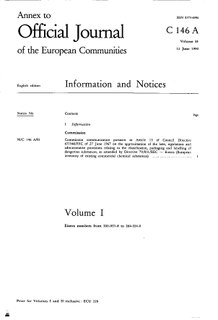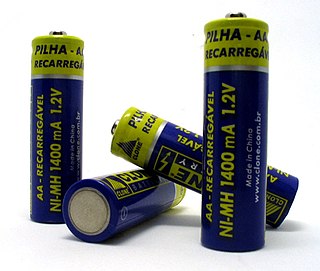Related Research Articles

A safety data sheet (SDS), material safety data sheet (MSDS), or product safety data sheet (PSDS) is a document that lists information relating to occupational safety and health for the use of various substances and products. SDSs are a widely used system for cataloguing information on chemicals, chemical compounds, and chemical mixtures. SDS information may include instructions for the safe use and potential hazards associated with a particular material or product, along with spill-handling procedures. The older MSDS formats could vary from source to source within a country depending on national requirements; however, the newer SDS format is internationally standardized.

Dangerous goods, abbreviated DG, are substances that when transported are a risk to health, safety, property or the environment. Certain dangerous goods that pose risks even when not being transported are known as hazardous materials.

The Dangerous Substances Directive was one of the main European Union laws concerning chemical safety, until its full replacement by the new regulation CLP Regulation (2008), starting in 2016. It was made under Article 100 of the Treaty of Rome. By agreement, it is also applicable in the EEA, and compliance with the directive will ensure compliance with the relevant Swiss laws. The Directive ceased to be in force on 31 May 2015 and was repealed by Regulation (EC) No 1272/2008 of the European Parliament and of the Council of 16 December 2008 on classification, labelling and packaging of substances and mixtures, amending and repealing Directives 67/548/EEC and 1999/45/EC, and amending Regulation (EC) No 1907/2006.

The European Community number is a unique seven-digit identifier that was assigned to substances for regulatory purposes within the European Union by the European Commission. The EC Inventory comprises three individual inventories, EINECS, ELINCS and the NLP list.

The European Chemicals Agency is an agency of the European Union which manages the technical and administrative aspects of the implementation of the European Union regulation called Registration, Evaluation, Authorisation and Restriction of Chemicals (REACH). ECHA is the driving force among regulatory authorities in implementing the EU's chemicals legislation. ECHA has to ascertain that companies comply with the legislation, advances the safe use of chemicals, provides information on chemicals and addresses chemicals of concern. It is located in Helsinki, Finland. ECHA is an independent and mature regulatory agency established by REACH. It is not a subsidiary entity of the European Commission.

The Globally Harmonized System of Classification and Labelling of Chemicals (GHS) is an internationally agreed-upon standard managed by the United Nations that was set up to replace the assortment of hazardous material classification and labelling schemes previously used around the world. Core elements of the GHS include standardized hazard testing criteria, universal warning pictograms, and harmonized safety data sheets which provide users of dangerous goods with a host of information. The system acts as a complement to the UN Numbered system of regulated hazardous material transport. Implementation is managed through the UN Secretariat. Although adoption has taken time, as of 2017, the system has been enacted to significant extents in most major countries of the world. This includes the European Union, which has implemented the United Nations' GHS into EU law as the CLP Regulation, and United States Occupational Safety and Health Administration standards.
Landfills in the United Kingdom were historically the most commonly used option for waste disposal. Up until the 1980s, policies of successive governments had endorsed the "dilute and disperse" approach. Britain has since adopted the appropriate European legislation and landfill sites are generally operated as full containment facilities. However, many dilute and disperse sites remain throughout Britain.

The Directive 2006/66/EC of the European Parliament and of the Council of 6 September 2006 on batteries and accumulators and waste batteries and accumulators and repealing Directive 91/157/EEC, commonly known as the Battery Directive, regulates the manufacture and disposal of batteries in the European Union with the aim of "improving the environmental performance of batteries and accumulators".

The Control of Substances Hazardous to Health Regulations 2002 is a United Kingdom Statutory Instrument which states general requirements imposed on employers to protect employees and other persons from the hazards of substances used at work by risk assessment, control of exposure, health surveillance and incident planning. There are also duties on employees to take care of their own exposure to hazardous substances and prohibitions on the import of certain substances into the European Economic Area. The regulations reenacted, with amendments, the Control of Substances Hazardous to Work Regulations 1999 and implement several European Union directives.
The role of incineration of waste and equipment used for it has changed radically in the recent years. While they were formerly notorious as pollutant spewing technical monsters in the eyes of citizens' groups, nowadays, thermal waste treatment facilities are considered to be the essential pillars of sustainable, forward-looking recycling and raw material sectors.
The European Chemicals Bureau (ECB) was the focal point for the data and assessment procedure on dangerous chemicals within the European Union (EU). The ECB was located in Ispra, Italy, under the responsibility of the Institute for Health and Consumer Protection (IHCP) of the Joint Research Centre (JRC) of the European Commission. In 2008 the ECB completed its mandate. Some of its activities were taken over by the European Chemicals Agency (ECHA); others remained within the Joint Research Centre's Institute for Health & Consumer Protection (IHCP). Tasks of the former ECB still managed by JRC-IHCP include: the Review Programme on the risk assessment of Biocides, the development of a methodology for the future Regulation on the Prioritisation of Chemical Substances and its corresponding Environmental Quality Standards (EQS); the harmonisation of testing methods and 'non-testing methods'.

The CLP Regulation is a European Union regulation from 2008, which aligns the European Union system of classification, labelling and packaging of chemical substances and mixtures to the Globally Harmonised System (GHS). It is expected to facilitate global trade and the harmonised communication of hazard information of chemicals and to promote regulatory efficiency. It complements the 2006 Registration, Evaluation, Authorisation and Restriction of Chemicals (REACH) Regulation and replaces the current system contained in the Dangerous Substances Directive (67/548/EEC) and the Dangerous Preparations Directive (1999/45/EC).
Hazard statements form part of the Globally Harmonized System of Classification and Labelling of Chemicals (GHS). They are intended to form a set of standardized phrases about the hazards of chemical substances and mixtures that can be translated into different languages. As such, they serve the same purpose as the well-known R-phrases, which they are intended to replace.
Hazard pictograms form part of the international Globally Harmonized System of Classification and Labelling of Chemicals (GHS). Two sets of pictograms are included within the GHS: one for the labelling of containers and for workplace hazard warnings, and a second for use during the transport of dangerous goods. Either one or the other is chosen, depending on the target audience, but the two are not used together. The two sets of pictograms use the same symbols for the same hazards, although certain symbols are not required for transport pictograms. Transport pictograms come in wider variety of colors and may contain additional information such as a subcategory number.

Musk xylene is a synthetic musk fragrance which mimics natural musk. It has been used as a perfume fixative in a wide variety of consumer products, and is still used in some cosmetics and fragrances.

Reproductive toxicity is a hazard associated with some chemical substances, which interfere in some way with normal reproduction; such substances are called reprotoxic. They may adversely affect sexual function and fertility in adult males and females, as well as causing developmental toxicity in the offspring. Reproductive toxicity is usually defined practically, to include several different effects which are unrelated to each other except in their outcome of lowered effective fertility. The Globally Harmonized System of Classification and Labelling of Chemicals (GHS) separates reproductive toxicity from germ cell mutagenicity and carcinogenicity, even though both these hazards may also affect fertility.

The Waste Framework Directive (WFD) is a European Union Directive concerned with "measures to protect the environment and human health by preventing or reducing the adverse impacts of the generation and management of waste and by reducing overall impacts of resource use and improving the efficiency of such use". The first Waste Framework Directive dates back to 1975. It had previously been substantially amended in 1991 and 2006. The present directive was adopted on 19 November 2008.

Waste management laws govern the transport, treatment, storage, and disposal of all manner of waste, including municipal solid waste, hazardous waste, and nuclear waste, among many other types. Waste laws are generally designed to minimize or eliminate the uncontrolled dispersal of waste materials into the environment in a manner that may cause ecological or biological harm, and include laws designed to reduce the generation of waste and promote or mandate waste recycling. Regulatory efforts include identifying and categorizing waste types and mandating transport, treatment, storage, and disposal practices.
European hazard symbols for chemicals are pictograms defined by the European Union for labelling chemical packaging and containers. They are standardised currently by the CLP/GHS classification.
References
- ↑ Technical Guidance WM2: Hazardous Waste; Interpretation of the definition and classification of hazardous waste, Version 3. August 2013, published by the Environment Agency, Scottish Environment Protection Agency, Natural Resources Wales and the Northern Ireland Environment Agency
- 1 2 Directive 2008/98/EC: The revised Waste Framework Directive
- ↑ Decision 2000/532/EC revised: The revised European Waste Catalogue 2002
- ↑ Regulation (EC) No 1272/2008: Classification, Labelling and Packaging of Substances and Mixtures
- ↑ CHIP 4 2009 The Chemicals (Hazard Information and Packaging for Supply) Regulations 2009
- ↑ Regulation (EC) No 790/2009 1st Adaptation to Technical Progress for European Regulation 1272/2008
- ↑ Regulation (EU) No 286/2011 2nd Adaptation to Technical Progress for European Regulation 1272/2008
- ↑ Regulation (EU) No 618/2012 3rd Adaptation to Technical Progress for European Regulation 1272/2008
- ↑ Regulation (EU) No 487/2013 4th Adaptation to Technical Progress for European Regulation 1272/2008
- ↑ Regulation (EC) No 944/2013 5th Adaptation to Technical Progress for European Regulation 1272/2008
- ↑ Regulation (EC) No 605/2014 6th Adaptation to Technical Progress for European Regulation 1272/2008
- ↑ Council Directive 1999/31/EC on the landfill of waste